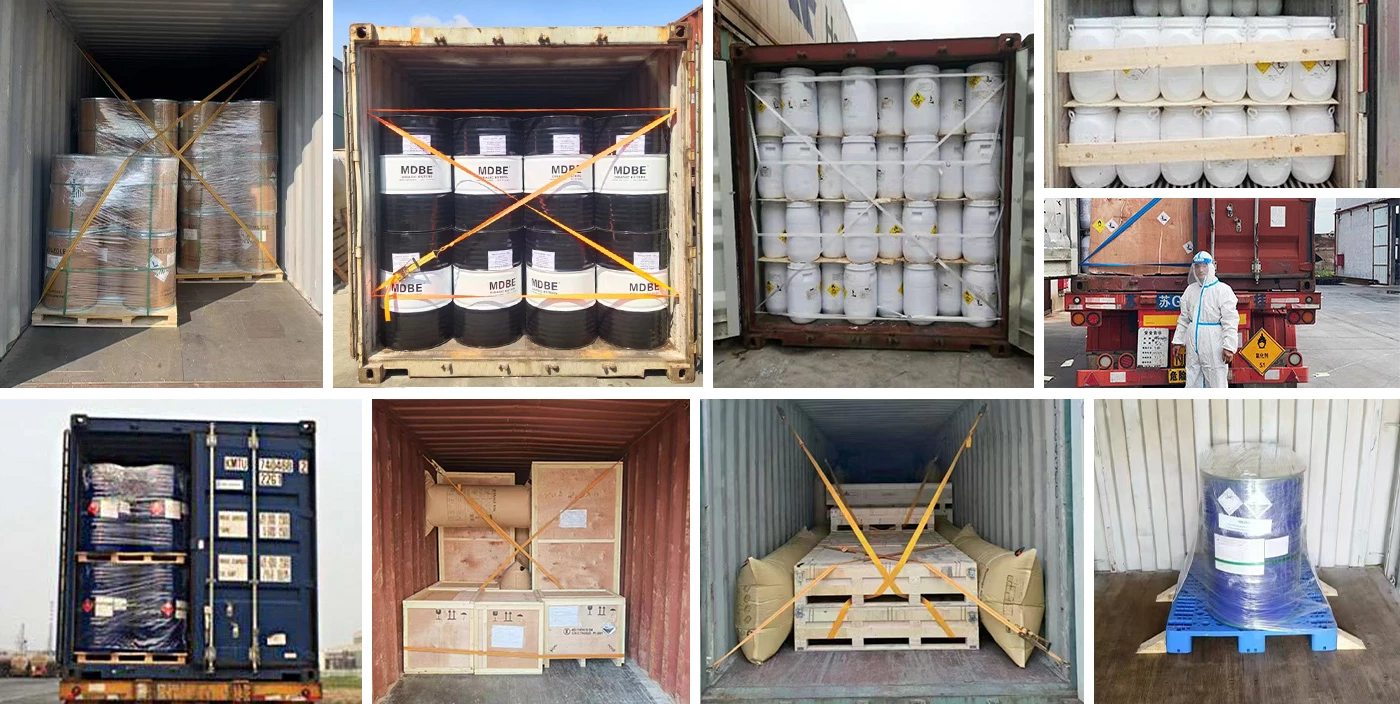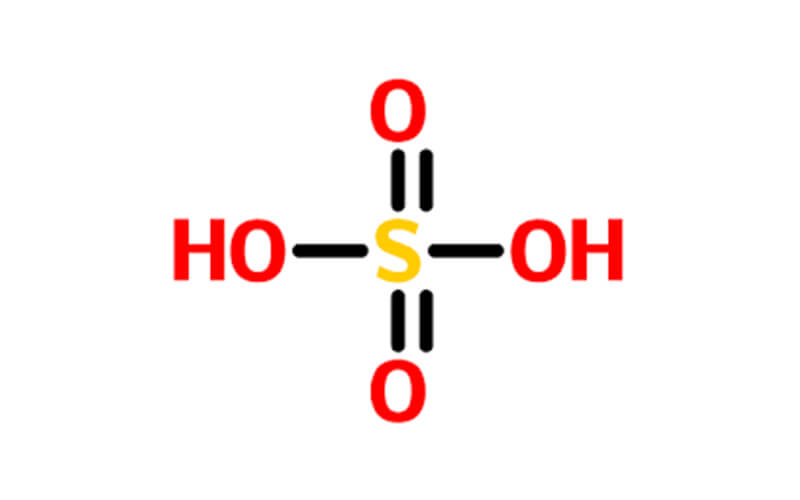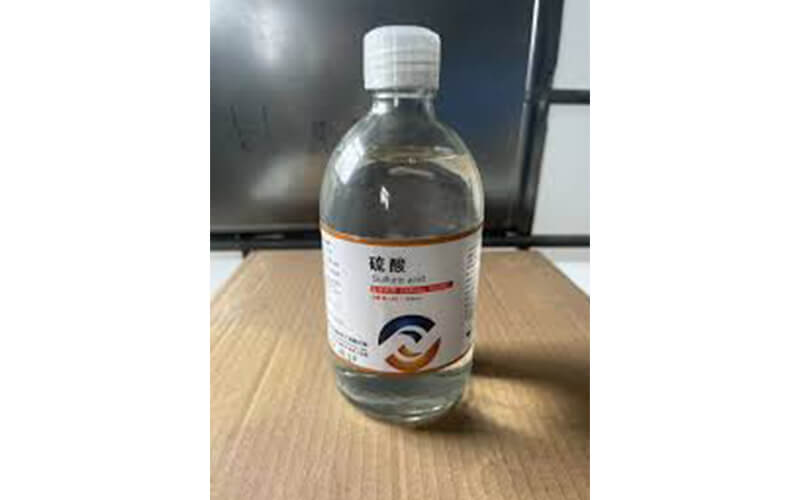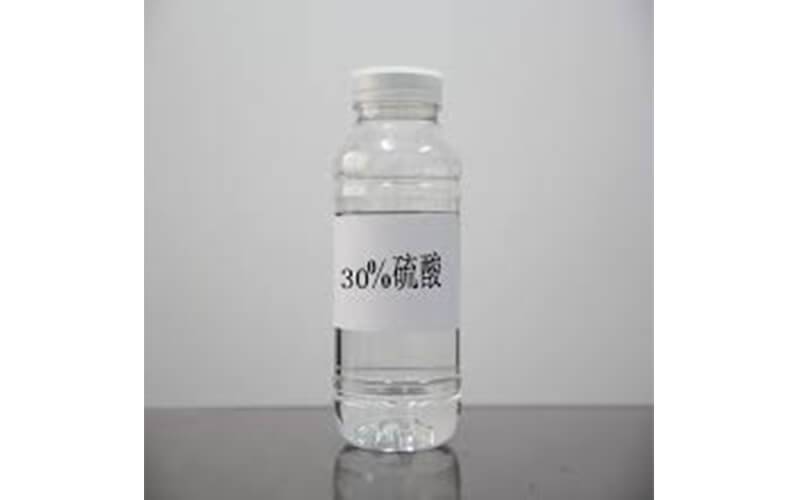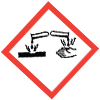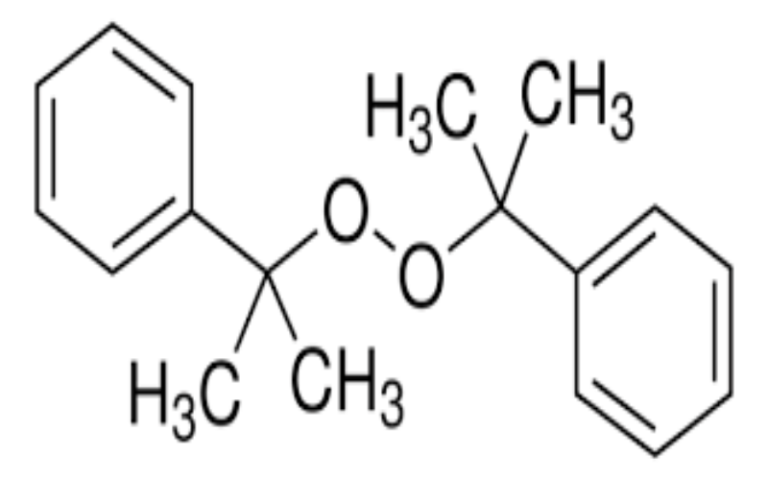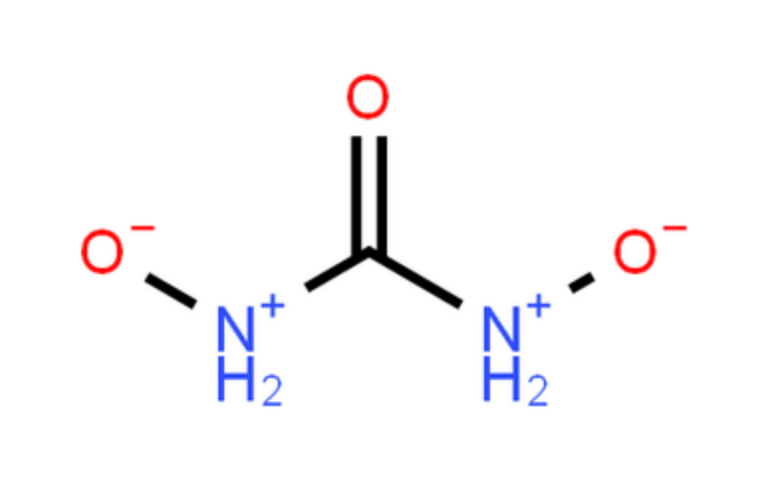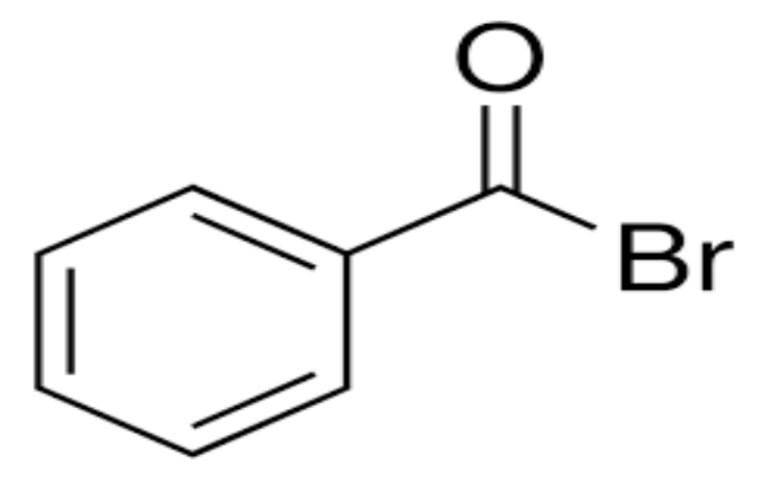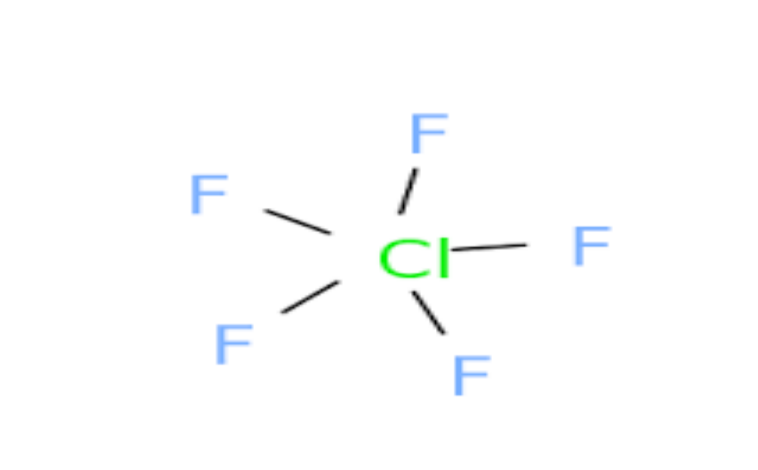Usage
Sulfuric acid has many uses in different industries, such as fertilizer production, metal production, mineral processing, petroleum refining, wastewater processing, etc. It is also used in the production of cleaning agents, dyes, pigments, drugs, detergents, and explosives. It is commonly used as the electrolyte in lead-acid batteries.
- Fertilizers: By far the largest amount of sulfuric acid is used to make phosphoric acid, used, in turn, to make the phosphate fertilizers, calcium dihydrogenphosphate and the ammonium phosphates. It is also used to make ammonium sulfate, which is a particularly important fertilizer in sulfur-deficient.
- Industrial cleaning agent: Sulfuric acid is used in large quantities by the iron and steelmaking industry to remove oxidation, rust and scaling from rolled sheet and billets prior to sale to the automobile and major appliances industry. Hydrogen peroxide (H2O2) can be added to sulfuric acid to produce piranha solution, a powerful but very toxic cleaning solution with which substrate surfaces can be cleaned. Piranha solution is typically used in the microelectronics industry, and also in laboratory settings to clean glassware.
- Metal processing: It is widely used in metal processing for example in the manufacture of copper and the manufacture of zinc and in cleaning the surface of steel sheet, known as ‘pickling’, prior to it being covered in a thin layer of tin, used to make cans for food.
- Catalyst: Sulfuric acid can be used as acid catalysts in many organic reactions. It covers the nitration of benzene, the hydration of ethene to manufacture ethanol, and the reactions both to produce esters and to hydrolyse them under acidic conditions.
- Electrolyte: Sulfuric acid acts as the electrolyte in lead–acid batteries (lead-acid accumulator): At anode: Pb + SO42− ? PbSO4 + 2 e− At cathode: PbO2 + 4 H+ + SO42− + 2 e− ? PbSO4 + 2 H2O; Overall: Pb + PbO2 + 4 H+ + 2 SO42− ? 2 PbSO4 + 2 H2O
- Domestic uses: Sulfuric acid at high concentrations is frequently the major ingredient in acidic drain cleaners[9] which are used to remove grease, hair, tissue paper, etc. Similar to their alkaline versions, such drain openers can dissolve fats and proteins via hydrolysis. Moreover, as concentrated sulfuric acid has a strong dehydrating property, it can remove tissue paper via dehydrating process as well. Since the acid may react with water vigorously, such acidic drain openers should be added slowly into the pipe to be cleaned.
- Others: Fluorapatite is treated with 93% sulfuric acid to produce calcium sulfate, hydrogen fluoride (HF) and phosphoric acid. The HF is removed as hydrofluoric acid. The overall process can be represented as: Ca5F(PO4)3 + 5 H2SO4 + 10 H2O → 5 CaSO4•2 H2O + HF + 3 H3PO4; Another important use for sulfuric acid is for the manufacture of aluminium sulfate, also known as paper maker’s alum. 2 AlO(OH) + 3 H2SO4 → Al2(SO4)3 + 4 H2O ; Sulfuric acid is also important in the manufacture of dyestuffs solutions, pigments and drugs. Whatsmore, sulfuric acid can be used in mineral processing, petroleum refining and wastewater processing.
Health Hazard
Corrosive to all body tissues. Inhalation of vapor may cause serious lung damage. Contact with eyes may result in total loss of vision. Skin contact may produce severe necrosis. Fatal amount for adult: between 1 teaspoonful and one-half ounce of the concentrated chemical. Even a few drops may be fatal if the acid gains access to the trachea. Chronic exposure may cause tracheobronchitis, stomatitis, conjunctivitis, and gastritis. Gastric perforation and peritonitis may occur and may be followed by circulatory collapse. Circulatory shock is often the immediate cause of death. Those with chronic respiratory, gastrointestinal, or nervous diseases and any eye and skin diseases are at greater risk.
Concentrated sulfuric acid is a highly corrosive liquid that can cause severe, deep burns upon skin contact. The concentrated acid destroys tissue because of its dehydrating action, while dilute H 2SO4 acts as a skin irritant because of its acid character. Eye contact with concentrated H2SO4 causes severe burns, which can result in permanent loss of vision; contact with dilute H2SO4 results in more transient effects from which recovery may be complete. Sulfuric acid mist severely irritates the eyes, respiratory tract, and skin. Because of its low vapor pressure, the principal inhalation hazard from sulfuric acid involves breathing in acid mists, which may result in irritation of the upper respiratory passages and erosion of dental surfaces. Higher inhalation exposures may lead to temporary lung irritation with difficulty breathing. Ingestion of sulfuric acid may cause severe burns to the mucous membranes of the mouth and esophagus. Animal testing with sulfuric acid did not demonstrate carcinogenic, mutagenic, embryotoxic, or reproductive effects. Chronic exposure to sulfuric acid mist may lead to bronchitis, skin lesions, conjunctivitis, and erosion of teeth.
Concentrated sulfuric acid is a very corrosiveliquid that can cause severe, deep burns to tissue. It can penetrate through skin andcause tissue necrosis. The effect may besimilar to that of thermal burns. Contact withthe eyes can cause permanent loss of vision.
Inhalation of its vapors or mist can produce severe bronchial constriction. Becausethe vapor pressure of sulfuric acid is negligible, <0.001 torr at 20°C (68°F), the inhalation hazard is low. However, the acid mists,having a particle size of <7 μm, may penetrate the upper respiratory tract and nasalpassage. Human exposure to acid mist at aconcentration of 5 mg/m3 in air producedcoughing. At concentrations of <1 mg/m3,there was no irritation. Chronic exposure tosulfuric acid mist may produce bronchitis,conjunctivitis, skin lesions, and erosion ofteeth. Frequent contact with dilute acid cancause dermatitis of skin.
LD50 value, oral (rats): 2140 mg/kg
LC50 value, inhalation (rats): 510 mg/m3/2 h.
Our company specializes in hazardous chemicals, flammable and explosive chemicals, toxic chemicals (legal export), ultra-pure and high-purity reagents. Welcome to contact us.
Packing and shipping
